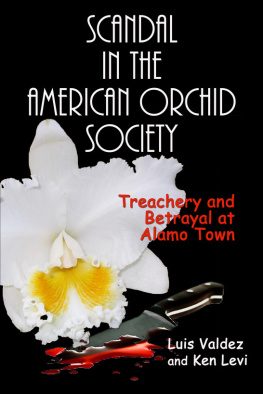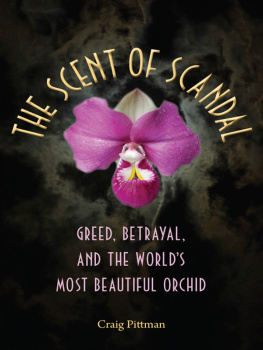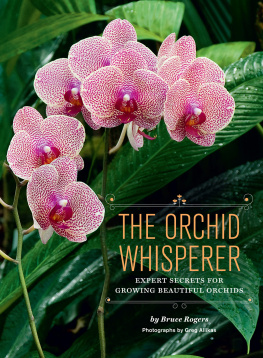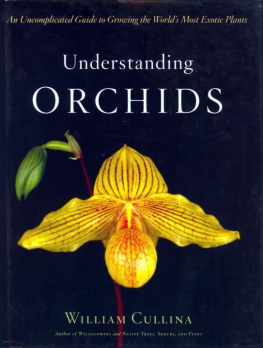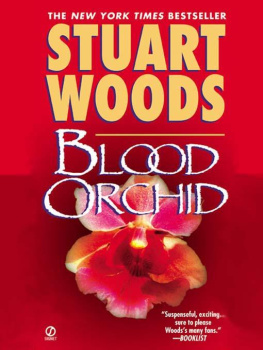SCANDAL IN THE AMERICAN ORCHID SOCIETY
Treachery and Betrayal at Alamo Town
By Luis Valdez and Ken Levi
Copyright 2020 Luis Valdez and Ken Levi
Smashwords Edition
Smashwords Edition, License Notes
This ebook is licensed for your personalenjoyment only. This ebook may not be resold or given away to otherpeople. If you would like to share this book with another person,please purchase an additional copy for each recipient. If yourereading this book and did not purchase it, or it was not purchasedfor your use only, then please return to your favorite bookretailer and purchase your own copy. Thank you for respecting thehard work of these authors.
Cover Credit
Cover Work: Rita Toews athttp://www.yourebookcover.com
Acknowledgements
We wish to thank Amada G. Garza and EllenMurphy for reviewing earlier copies of this manuscript, and forproviding us with invaluable advice.
The orchid on the front cover is -appropriately - a Cattleya Alamo. It was hybridized by Ed Wright, aone-time President of the Alamo Orchid Society. He named it, and in1989, entered it into the register of the Royal HorticulturalSociety, London.
Table ofContents
1.Scandal
In January, 2020, the Board of Directors(BOD) of the Alamo Orchid Society (AOS), San Antonio, Texas, votedto expel two of its members. The vote was five to one. The expelledmembers were me, Luis Valdez, and my partner, Ken Levi.
The expulsion of members had never happenedbefore in the AOS, not once in its 65 year history. Stranger stillis the particular nature of the members expelled. I was not just amember of the AOS. I was the immediate past President. Likewise,Ken was not just a member. He was the immediate past VicePresident. Both of us had been elected and re-elected by aunanimous vote of the members.
Not only were Ken and I popular leadersduring our time in office, but, significantly, I was the OrchidSocietys first Hispanic President.
Most noteworthy is the sneaky nature of theBOD action. AOS President Tom Dunlap did not issue any advancenotice that the question of expulsion would be on the BOD agenda.So, neither Ken nor I was present on the day of the vote. Both ofus were on vacation in Mexico. Neither of us was given anopportunity to defend himself. Neither was afforded due process.The vote was taken behind our backs.
Moreover, the motion to expel two pastofficers - a President and a Vice President - was never put up fordiscussion before the full Society. The vote was taken behind thebacks of the membership. One might suppose such a momentous andprecedent setting action would require full disclosure andparticipation. But that never happened.
The full membership was only formallynotified by a small paragraph buried on page 3 of the February,2020, newsletter. It said:
A motion was discussed and proposed toremove Louis [sic] Valdez and Ken Levi as members based on theiractions detrimental to the society over the past year. The motionpassed as stated by a five to one vote.
The BOD minutes were signed, Tracey Davis,Secretary.
Such revenge by a current President on theprior President is not a common occurrence in advanced, democraticsocieties, governed by the rule of law.
In third world dictatorships, however, sucharbitrary spitefulness is a common practice. History is repletewith the jailing, and even execution, in nations such as Sudan,Congo, Bangladesh, Burma, Panama, Bolivia, Paraguay, and Guatemala.Such behavior is SOP - standard operating procedure - for a BananaRepublic.
In the expulsion of myself and Levi, the ruleof law was notably absent. In a letter to Tom Dunlap, a lawyer,consulted by us, put it this way:
I did not see a basis for removing membersin our by-laws or in Roberts Rules of Order - the two authoritiesthat govern our society. The by-laws state that, upon payment ofdues, a person applying for membership shall be accepted as amember. See Bylaws Art. III, sec. 1. The only requirement formembership is payment of dues. The bylaws do not outline why or howa member may be expelled, although there are procedures settingforth why and how officers, or board members may be removed fromoffice. See Bylaws, Art. VI, sec. 5. The bylaws thus contemplatethat officers and board members may be removed - but notmembers.
According to Roberts Rules of Order, oursociety may make and enforce its own laws and punish an offender,including punishment by expulsion. See Robts Rules, Art XIII,para 72. Our laws are our bylaws. We may punish an offender whohas violated our bylaws - Roberts Rules do not provide anindependent basis for expulsion of a member, including why and howa member may be removed. But, as the bylaws stand now, membersmay not be removed from the society [italics mine].
In other words, the BOD acted unlawfully.They acted in contravention of their own laws, which included theAOS Bylaws and Roberts Rules of Order. Indeed, the AOS Bylawsstate in Article XI, the final article in the document,
The guide for parliamentary procedures ofmeetings of the Alamo Orchid Society shall be Roberts Rules ofOrder, revised.
This book is about mismanagement in avoluntary society. Its about foolish decisions. Its about how onefoolish decision after another built up over the course of a yearto a disastrous blowout in the end.
2.Historical Background
Why is the American Orchid Society (AmOS) inany way implicated in the AOS scandal? To put it simply, the AOS ispart of the American Orchid Society. Its as if a McDonalds outletserved tainted beef. Who do you blame? Just that one outlet? Or,McDonalds as a whole?
The American Orchid Society was founded inBoston a hundred years ago, in 1921, as an offshoot of theMassachusetts Horticultural Society (MHS). A small group of orchidlovers, consisting of 35 men and one woman, launched the Societyfor the purpose of the education, conservation, and research oforchids. By 2001, the AmOS had grown to be the largest specialinterest horticultural organization in the world. Today itencompasses over 400 affiliated societies, including the AlamoOrchid Society in San Antonio.
Dating back even earlier, the MassachusettsHorticultural Society, which gave birth to the AmOS, was itselffounded in February 1829. This occurred during the waning days ofthe John Quincy Adams administration, just before Andrew Jacksonascended to the Presidency.
A signal event in MHS history came in 1901,when they constructed Horticulture Hall, an imposing brick andmarble Renaissance Revival edifice, at the corner of HuntingtonAvenue and Massachusetts Avenue, across from the Boston Symphony.They celebrated their grand opening with a ten day floral exhibit,featuring a special display of 1000 orchids.
In 1924, the newly founded orchid societyheld their own, first show from May 8 to 11. Open to the public inHorticulture Hall, it was dubbed The Great Orchid Exhibition inBoston. In June of 1932, the AmOS launched their first periodical,the AOS Bulletin, which subsequently became Orchidsmagazine. Then, in 1946, the AmOS established the Cleveland OrchidSociety as their first world-wide affiliated organization.
By 1984, however, after 60 years inresidence, the AmOS had to move. Horticulture Hall was undergoing a$4 million renovation, for the purpose of commercializing theproperty. So, the orchid society uprooted itself, and established anew home in West Palm Beach, Florida. The local neighborhoodassociation, however, objected to their presence, and eventuallygot them to move again, this time to Delray Beach.
That stay was also short-lived. Financialpressures led the AmOS to form an alliance with the FairchildBotanic Garden in Coral Gables, Florida, which is their currentlocation. This final move was occasioned by a loss of funds, due toa steep decline in membership. It slid from 29,000 members in 2001,to 10,000 in 2011.

